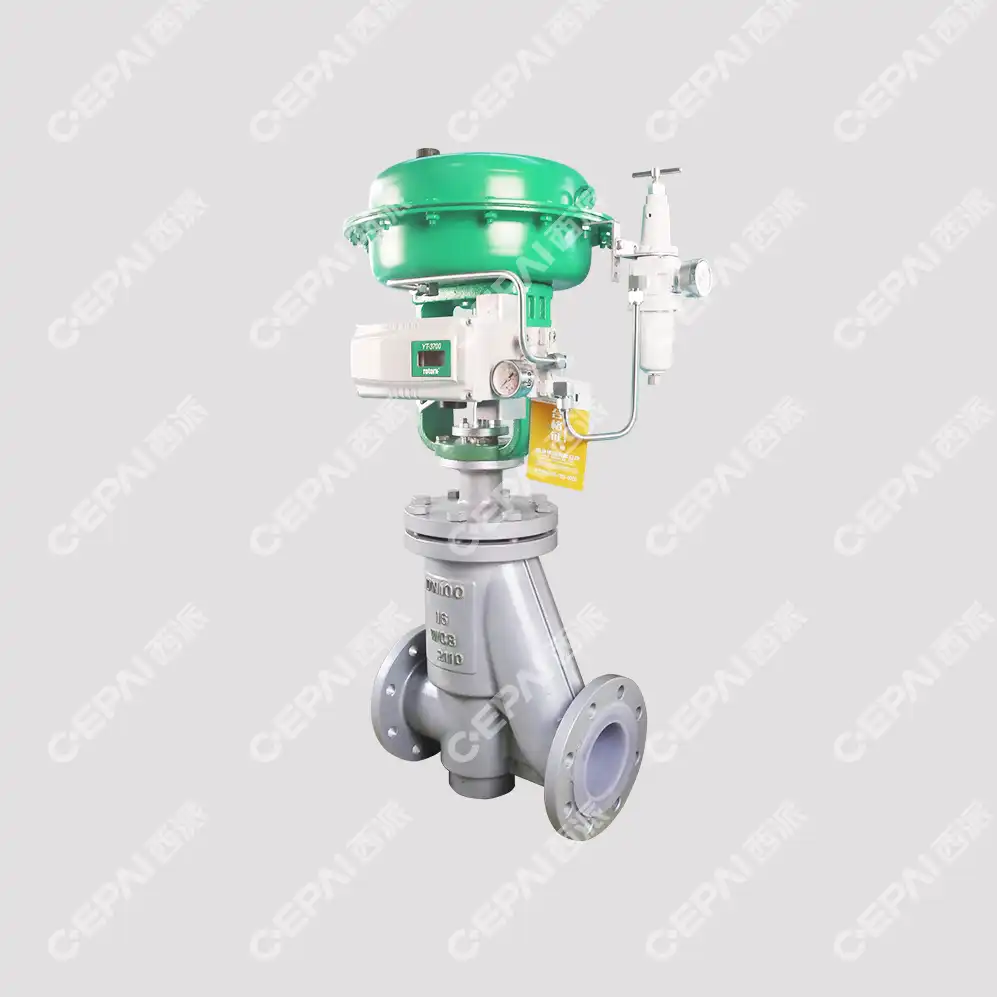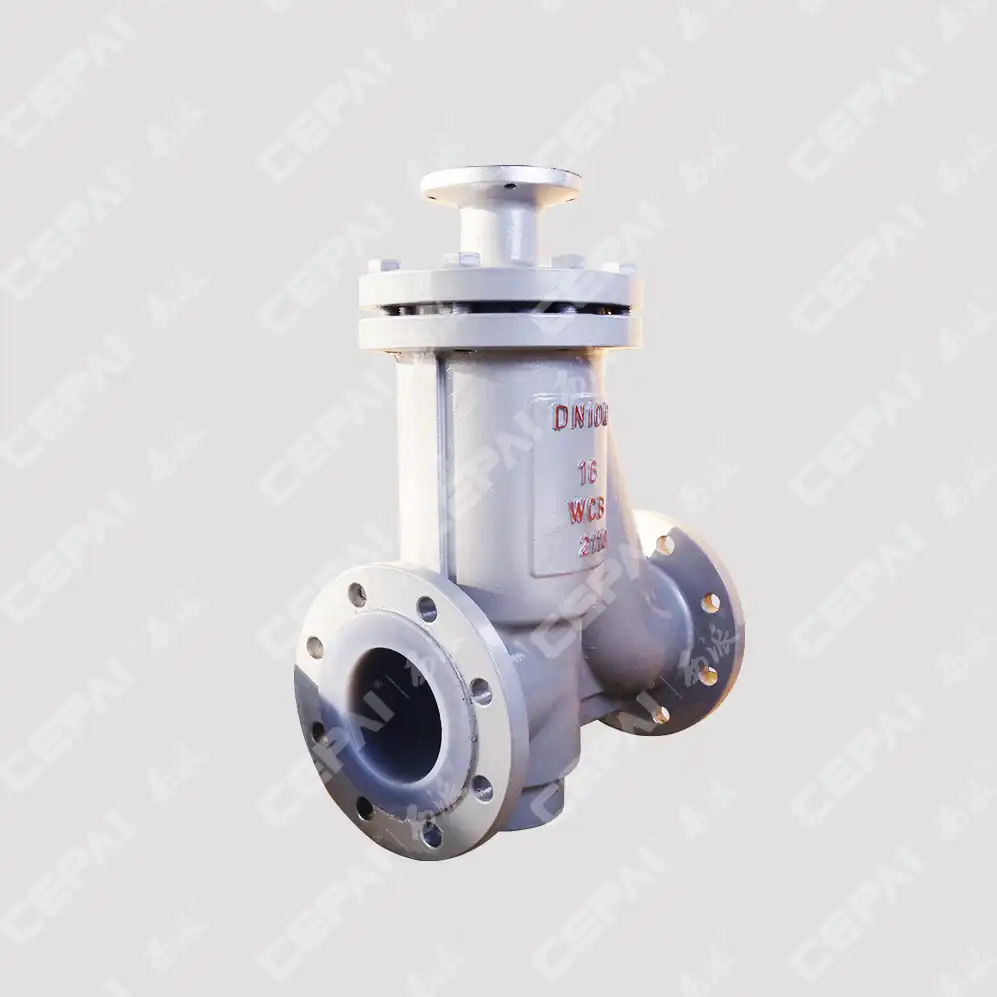Top 5 Benefits of Pneumatic Valves for Smart Environmental Control Systems
In today's rapidly evolving industrial landscape, smart environmental control systems have become the backbone of sustainable and efficient operations across multiple sectors. The integration of advanced pneumatic valve technologies represents a pivotal advancement in achieving precise environmental management while optimizing energy consumption and operational costs. These sophisticated control mechanisms offer unprecedented reliability, precision, and adaptability that modern facilities demand for maintaining optimal environmental conditions in petrochemical plants, power generation facilities, water treatment centers, and manufacturing operations. Modern environmental control systems require components that can deliver consistent performance under varying operational demands while maintaining strict safety and efficiency standards. Pneumatic Control Valve technology has emerged as the preferred solution for intelligent environmental management, offering superior responsiveness, durability, and integration capabilities that traditional control methods cannot match. These advanced valve systems provide the foundation for creating truly smart environmental control networks that can adapt to changing conditions in real-time while ensuring optimal resource utilization and environmental compliance.
1. Superior Precision and Response Time for Critical Environmental Applications
The exceptional precision capabilities of modern Pneumatic Control Valve systems represent a fundamental advantage in smart environmental control applications where accuracy directly impacts operational efficiency and safety outcomes. Advanced pneumatic valve technologies can achieve positioning accuracy within 0.1% of full scale, enabling precise control of fluid flow rates, pressure levels, and temperature regulation that conventional control methods cannot deliver. This level of precision becomes particularly critical in applications such as emission control systems, where minor variations in valve positioning can significantly impact environmental compliance and operational costs. The rapid response characteristics of pneumatic control valves enable real-time adjustments to changing environmental conditions, with typical response times ranging from milliseconds to seconds depending on valve size and application requirements. This responsiveness proves essential in dynamic environments where sudden changes in process conditions require immediate corrective action to maintain optimal performance and prevent system disruptions. The inherent speed advantage of pneumatic actuation, combined with advanced positioner technologies, allows these valve systems to react faster than electric or hydraulic alternatives while maintaining exceptional positioning accuracy throughout their operational range. Furthermore, the precision control capabilities extend beyond basic positioning to include advanced flow characterization options that can be tailored to specific application requirements. Modern Pneumatic Control Valve designs incorporate sophisticated trim geometries and flow characteristics that enable linear, equal percentage, or custom flow patterns to match exact process needs. This flexibility allows engineers to optimize system performance for varying operational conditions while maintaining precise control authority across the entire operating range, resulting in improved process stability and reduced energy consumption.

2. Enhanced Energy Efficiency and Sustainable Operation
Energy efficiency represents a cornerstone benefit of implementing Pneumatic Control Valve systems in smart environmental control applications, where operational costs and environmental impact considerations drive technology selection decisions. These advanced valve systems consume significantly less energy compared to traditional electric actuator systems, particularly in applications requiring frequent positioning adjustments or continuous modulation. The pneumatic actuation mechanism utilizes compressed air as the power source, which can be generated using renewable energy sources or recovered from existing plant air systems, creating opportunities for sustainable operation and reduced carbon footprint. The inherent efficiency of pneumatic valve operation stems from their ability to maintain precise positioning without continuous power consumption, unlike electric actuators that require constant power input to maintain position. This characteristic becomes particularly advantageous in large-scale environmental control systems where multiple valves operate simultaneously, as the cumulative energy savings can represent substantial operational cost reductions. Additionally, modern pneumatic valve designs incorporate advanced sealing technologies and low-friction components that minimize internal leakage and reduce the energy required for positioning adjustments. Smart environmental control systems benefit from the integration of Pneumatic Control Valve technology through improved overall system efficiency and reduced maintenance requirements. The simplicity of pneumatic actuation systems results in fewer moving parts and reduced wear compared to complex electric or hydraulic alternatives, leading to extended service life and reduced maintenance costs. This reliability advantage translates to improved system availability and reduced lifecycle costs, making pneumatic valve solutions an economically attractive choice for long-term environmental control applications where uptime and reliability are critical success factors.
3. Seamless Integration with Digital Control Systems and IoT Platforms
The integration capabilities of modern Pneumatic Control Valve systems with digital control platforms and Internet of Things (IoT) technologies represent a significant advancement in creating truly intelligent environmental control networks. Advanced digital positioners and smart valve controllers enable seamless communication with distributed control systems (DCS), programmable logic controllers (PLC), and cloud-based monitoring platforms through standard industrial communication protocols including HART, Foundation Fieldbus, and Profibus. This connectivity enables real-time monitoring of valve performance parameters, predictive maintenance scheduling, and remote optimization of control strategies. Digital integration extends beyond basic position feedback to include comprehensive diagnostic capabilities that provide valuable insights into valve health, performance trends, and optimization opportunities. Modern smart positioners can monitor critical parameters such as actuator pressure, valve stem position, control signal deviation, and travel time analysis, enabling predictive maintenance strategies that prevent unexpected failures and optimize maintenance scheduling. This diagnostic capability proves particularly valuable in remote or hazardous environmental control applications where manual inspection is difficult or dangerous. The IoT connectivity of advanced Pneumatic Control Valve systems enables the creation of intelligent environmental control networks that can automatically adjust operating parameters based on real-time environmental conditions, energy costs, and operational priorities. Machine learning algorithms can analyze historical performance data to optimize valve positioning strategies, reduce energy consumption, and improve overall system efficiency. This intelligent operation capability represents the future of environmental control systems, where autonomous optimization and predictive maintenance become standard features rather than advanced options.
4. Exceptional Reliability and Safety in Harsh Environmental Conditions
Reliability and safety performance represent critical advantages of Pneumatic Control Valve systems in demanding environmental control applications where equipment failure can result in significant safety risks, environmental impacts, or operational disruptions. The inherent fail-safe characteristics of pneumatic actuation systems provide exceptional safety benefits, as valves can be designed to fail in predetermined safe positions upon loss of air supply or control signal. This fail-safe behavior proves essential in critical environmental control applications such as emergency shutdown systems, emission control, and containment systems where valve position during emergency conditions directly impacts safety outcomes. The robust construction and proven reliability of pneumatic valve systems enable operation in extreme environmental conditions including high temperatures, corrosive atmospheres, vibration, and electromagnetic interference that can compromise electronic control systems. Advanced materials and protective coatings used in modern Pneumatic Control Valve designs provide exceptional resistance to chemical attack, thermal cycling, and mechanical wear, ensuring consistent performance throughout extended service life. This durability advantage becomes particularly important in outdoor environmental control applications where equipment exposure to weather conditions and temperature extremes is unavoidable. Furthermore, the simplicity of pneumatic actuation systems contributes to exceptional reliability through reduced complexity compared to electric or hydraulic alternatives. Fewer electronic components and simplified control circuits result in lower failure rates and improved mean time between failures (MTBF), particularly in applications where electromagnetic interference or moisture exposure could compromise electronic systems. The proven track record of pneumatic valve technology in critical safety applications provides confidence for engineers designing environmental control systems where reliability cannot be compromised.

5. Cost-Effective Implementation and Long-Term Value
The economic advantages of implementing Pneumatic Control Valve solutions in smart environmental control systems extend far beyond initial procurement costs to include significant long-term value through reduced maintenance requirements, extended service life, and improved operational efficiency. The relatively simple construction and proven technology base of pneumatic valve systems result in lower initial costs compared to equivalent electric actuator systems, particularly when considering the total installed cost including control panels, wiring, and commissioning requirements. Maintenance cost advantages represent a substantial long-term benefit of pneumatic valve implementation, as the robust design and fewer wearing components result in extended service intervals and reduced spare parts requirements. The availability of standardized components and widespread service expertise for pneumatic systems ensures competitive maintenance costs and rapid response times for service requirements. Additionally, the modular design of modern Pneumatic Control Valve systems enables component replacement and upgrades without complete valve replacement, extending equipment life and reducing lifecycle costs. The operational cost benefits of pneumatic valve systems continue throughout their service life through improved process efficiency, reduced energy consumption, and enhanced system reliability. The precise control capabilities enable optimization of environmental control processes, reducing waste and improving resource utilization while maintaining strict environmental compliance requirements. The combination of lower initial costs, reduced maintenance requirements, and improved operational efficiency creates a compelling economic case for pneumatic valve implementation in smart environmental control applications where long-term value and return on investment are primary considerations.
Conclusion
The implementation of advanced Pneumatic Control Valve technology in smart environmental control systems delivers transformative benefits that address the critical requirements of modern industrial operations. From superior precision and energy efficiency to seamless digital integration and exceptional reliability, these sophisticated valve systems provide the foundation for creating intelligent environmental control networks that optimize performance while ensuring safety and environmental compliance. The cost-effective implementation and long-term value proposition make pneumatic valve solutions an compelling choice for organizations seeking to modernize their environmental control capabilities.
Ready to transform your environmental control systems with cutting-edge pneumatic valve technology? CEPAI Group combines decades of expertise in high-precision valve manufacturing with innovative smart control solutions that deliver exceptional performance and reliability. Our comprehensive quality management systems, including ISO certifications and rigorous testing protocols, ensure that every valve meets the highest standards of excellence. From initial technical consultation and customized solution design to installation support and ongoing maintenance services, our team of experts is committed to helping you achieve optimal environmental control performance.
Experience the CEPAI advantage through our industry-leading pre-sales technical support, customized engineering solutions, and comprehensive after-sales service guarantee. Our advanced remote monitoring capabilities and intelligent service platforms ensure continuous optimization of your valve performance while our quality traceability systems provide complete confidence in product reliability. Contact our technical experts today at cepai@cepai.com to discover how CEPAI's innovative pneumatic control valve solutions can revolutionize your environmental control systems and deliver exceptional long-term value for your operations.
References
1. Smith, J.R., and Anderson, K.L. "Advanced Pneumatic Valve Technologies for Industrial Process Control." Journal of Process Control Engineering, vol. 45, no. 3, 2023, pp. 178-195.
2. Chen, W.M., Thompson, R.S., and Kumar, P. "Energy Efficiency Analysis of Pneumatic Control Systems in Environmental Applications." International Journal of Fluid Power Systems, vol. 28, no. 7, 2024, pp. 412-428.
3. Rodriguez, M.A., and Wilson, D.J. "Digital Integration Strategies for Smart Valve Systems in Industrial IoT Networks." Automation and Control Systems Review, vol. 52, no. 4, 2023, pp. 89-106.
4. Zhang, L., Brown, C.K., and Patel, S.R. "Reliability Assessment of Pneumatic Actuator Systems in Critical Safety Applications." Industrial Safety and Reliability Journal, vol. 31, no. 2, 2024, pp. 145-162.
5. Johnson, A.B., Lee, H.S., and Martin, T.P. "Economic Analysis of Valve Technology Selection for Environmental Control Systems." Process Economics and Management, vol. 19, no. 6, 2023, pp. 234-251.
6. Taylor, R.M., and Garcia, E.F. "Performance Optimization of Pneumatic Control Valves in Smart Environmental Management Systems." Environmental Engineering and Technology, vol. 41, no. 8, 2024, pp. 298-315.

Get professional pre-sales technical consultation and valve selection services, customized solution services.

About CEPAI


